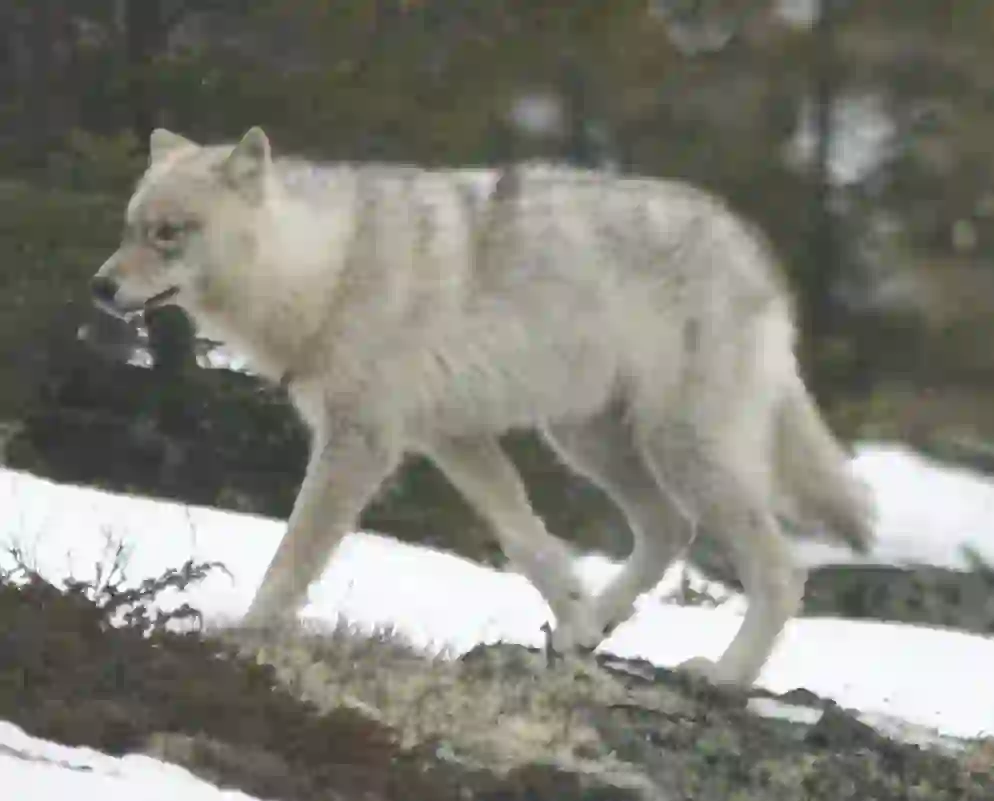
Great Plains Wolf
Great Plains Wolf
Great Plains Wolf
The Great Plains wolf once roamed freely across the vast prairies of the Midwestern United States. They were driven to the brink of extinction by humans, but through conservation efforts, they are slowly making a comeback. Let's listen to the story of the Great Plains wolf, explore their ecology, and consider the hope for their future.
Great Plains Wolf Basic Infomation
.webp?alt=media)
| Property | Value |
|---|---|
| Scientific Name | Canis lupus nubilus |
| Taxonomic Status | ACCEPTED |
| Rank | SUBSPECIES |
| Kingdom | Animalia |
| Phylum | Chordata |
| Class | Mammalia |
| Order | Carnivora |
| Family | Canidae |
| Genus | Canis |
| Conservation Status | Near Threatened |
| Species | Canis lupus |
.webp?alt=media)
Size
Adults stand about 26 to 32 inches (65 to 80 centimeters) tall at the shoulder and weigh about 66 to 110 pounds (30 to 50 kilograms). They are medium-sized wolves, with males typically being larger than females.

Lifespan
They live for about 6 to 8 years in the wild. In captivity, they can live for over 10 years.
.webp?alt=media)
Distribution
They were once widely distributed across the Midwestern United States, including Minnesota, Wisconsin, Michigan, North Dakota, South Dakota, Iowa, Illinois, Missouri, Kansas, Nebraska, Colorado, Wyoming, and Montana.
They are now reintroduced to parts of the Midwestern United States, including Minnesota, Wisconsin, and Michigan, as well as parts of Ontario, Canada.
Great Plains Wolf Q&A
.webp?alt=media)
What kind of wolf is the Great Plains wolf?
The Great Plains wolf is a subspecies of the gray wolf, native to North America. They have grayish fur, often with a mix of black and brown.
Their fur becomes thicker, longer, and paler in the winter, which helps them blend in with the snowy environment. The Great Plains wolf was a highly social animal that lived and hunted cooperatively in packs. They were known for their intelligence and complex communication methods. They used howls, body language, and facial expressions to communicate with each other.

What did Great Plains wolves eat?
Great Plains wolves were carnivores and their primary prey included large mammals like deer, bison, elk, and pronghorn.
Their ability to hunt in packs enabled them to take down prey much larger than themselves. They also ate rabbits, rodents, birds, and occasionally fruits and berries. In the winter, when food was scarce, they would sometimes scavenge on carrion.
.webp?alt=media)
Why were they driven to the brink of extinction?
The Great Plains wolf was driven to the brink of extinction mainly due to human activities.
During the late 19th and early 20th centuries, as the American West expanded, many settlers moved into the Midwest, which was the Great Plains wolf's habitat. Settlers cleared land for ranches and farms and grazed their livestock. The Great Plains wolf was then targeted and eradicated as a pest for preying on livestock. The government offered bounties for killing wolves. Furthermore, their forest habitat was logged for timber, leading to habitat loss. These combined factors nearly drove the Great Plains wolf to extinction in the wild by the 1960s.

[Quiz!] How did the Great Plains wolf make a comeback?
In the 1970s, the Great Plains wolf was protected under the Endangered Species Act.
In the 1990s, efforts began to reintroduce captive-bred Great Plains wolves into the wild. In 1995, Great Plains wolves captured in Canada were reintroduced to Minnesota and Yellowstone National Park. Reintroduction efforts continued, and today, there are about 4,000 Great Plains wolves in the Midwestern United States and parts of Canada. Their recovery is a globally recognized success story for conservation efforts.
.webp?alt=media)
[Quiz!] Are Great Plains wolves dangerous to humans?
Great Plains wolves rarely attack humans. They are shy and tend to avoid human contact.
However, human development has encroached on their habitat in recent years, forcing them to venture closer to human settlements in search of food. This has led to some conflicts between humans and wolves. If you encounter a Great Plains wolf, do not approach or provoke it, and quietly leave the area.

[Quiz!] Are Great Plains wolves still endangered?
The Great Plains wolf is currently listed as 'Near Threatened' on the IUCN (International Union for Conservation of Nature) Red List.
Although their population is increasing due to conservation efforts, they are still threatened by habitat loss, poaching, and human-wildlife conflict. Protecting Great Plains wolves requires protecting their habitat, preventing poaching, and finding ways to coexist with humans.

Would you like to become a part of the 'Animalbook.jp'?
Turn your knowledge into Q&A and share it with the world. ※Publication will be activated after purchase. Let's share information together!
Great Plains Wolf Type of List
.webp?alt=media)
Characteristics of the Great Plains Wolf
- Subspecies of the gray wolf
- Once lived in the Midwestern United States
- Grayish coat
- Medium-sized wolf
- Exterminated as pests for preying on livestock
- Near Threatened
- Population recovering through conservation programs
Information
Congratulations! You are the first commenter!

Create Your Favorite List!
Great Plains Wolf
Save the animals you love! Build your own list to quickly revisit your favorites later.

Would you like to leave a comment?
※Please note: This is for the purchase of rights to post comments within the article.
Find Your Favorites!
Our shop offers a unique and attractive selection of goods themed around various animals.
Great Plains Wolf References
Great Plains Wolf Introduction of media used
.webp?alt=media)
peupleloup, CC BY-SA 2.0, via Wikimedia Commons

Peupleloup, FAL, via Wikimedia Commons

Help Enrich Our Animalbook.jp with Your Media!
We are constantly looking to expand and enrich our Animalbook.jp with amazing photos and videos of animals. If you have any media that you'd like to share, please contribute and help us showcase the beauty and diversity of the animal kingdom. Your submissions will be credited and featured in our encyclopedia, reaching a wide audience of animal lovers.


















